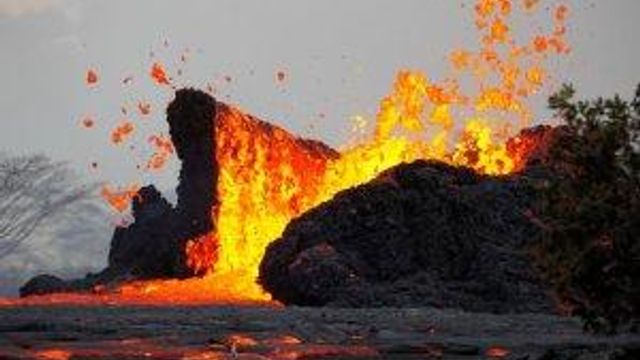Hawaii volcano creating its own weather
The Hawaii volcano, in addition to spewing ash, fountaining lava and bursting lava bombs from the Earth, is even creating its own weather. The United States Geological Survey, or USGS, posted a photo to Facebook from earlier this week that shows building pyrocumulus clouds over fissure 8.
Posted — Updated"Hawaii Volcano Observatory Scientists are beginning to observe these 'pyrocumulus' clouds forming over the Leilani Estates fissure system," stated the USGS.
Pyrocumulus clouds are rare mushroom-like cloud formations that can tower above lava and gases spattering from a volcano. They are often also referred to as "flammagenitus" or "fire clouds," the USGS said in the post.
Normal everyday cumulus clouds that you see bubbling up in the sky on a warm summer's afternoon form as the sun's rays heat the ground. The warming air above the ground rises because it is less dense than the cooler air above. As the air rises, the air cools and condenses to form a cloud.
During a volcanic eruption, pyrocumulus clouds form due to the intense heat releasing from the ground below. This heat warms the air near the ground, causing it to rise and condense into a cloud. Not only do these clouds look like thunderstorms, they can act like them too. They can even produce lightning if they have enough electrostatically charged particles from an ash cloud.
These clouds don't just form near volcano summits, but they are the same type of clouds that build over intense wildfires.
While these clouds may look ominous, these clouds have been low to the ground. So far, they have yet to produce a thunderstorm or lightning.
The USGS commented that "this eruption is too small to have an impact on the area's climate. Once the eruption is over, the gases will quickly dissipate. They pose the same hazards as any thunderstorm. They don't hold volcanic ash, so they don't have any additional hazard from electrostatically charged ash particles."
Copyright 2024 by Cable News Network, Inc., a Time Warner Company. All rights reserved.






